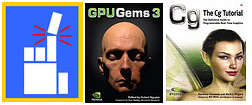Here's the problem : I'm working on a versus fighting game, World of Ideas (you can download the first beta and its source code HERE) and I'd like to use both lightmaps and normal maps at the same time.
I can't do it with Irrlicht only, as each material cannot have more than 2 textures (diffuse map + lightmap OR diffuse map + normal map), so I'm stuck with this dilemma :
- Top picture is lightmapped.
- Bottom picture is normal mapped.

(Don't worry about stairs -they are not textured yet- and the windows near the roof -they are not correctly drawn-, this level is not finished yet)
Is there a way to use both at the same time using a clerverly written shader ? If so, how ?

